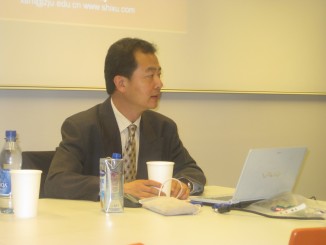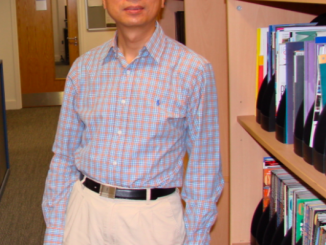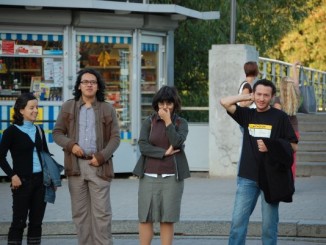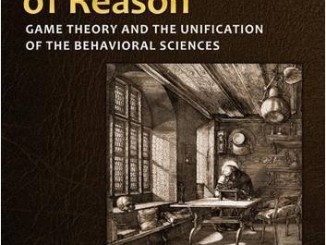
Editorial: A Sleeping Beauty
It is useful to be reminded from time to time that dogmas are the opium of intelligence. They literally stop the inquiry and put the critical mind to sleep or lead it to wander into […]

It is useful to be reminded from time to time that dogmas are the opium of intelligence. They literally stop the inquiry and put the critical mind to sleep or lead it to wander into […]

Semiotics has to do with texts, that is, with the inscription, transformation and interpretation of organized sets of signs. In this contribution I shall contend that the genealogy of lexicography represents an ideal standpoint to address a central issue for semiotics, namely, how the manipulation of signs and meanings may determine the shaping of cultural objects. I shall begin by introducing the revolution that lexicography undertook during the nineteen century, discussing why this process required the availability of a specific set of concepts, as the one of “meaning” as something mutable and historical, and then how it led up to the emergence of new techniques of the self, to the coming into being of a new kind of people (the professional lexicographer) and to the introduction of new practices of sign-observation and inscription. I shall then consider how the lexicographer, being entitled to select certain definitions instead of others, acquired the power to fix the meaning of terms involving moral and religious content (“marriage”, “conversion”, etc.), to influence scientific and philosophical dispute (defining key-concepts as “continuity”, “belief”, “soul”, “ether”, etc.) and to impact the culture of distant populations by exporting new signs into their language (as the word “God”). Finally, I shall confront the historical development of lexicography with the project of the dictionary of Newspeak that George Orwell described in 1984. […]

Social Semiotics, published by Taylor & Francis, is a journal that has been returning to its roots over the past seven years. The journal was first established in the early 1980s by a group of scholars in Australia, including Gunter Kress, Theo Van Leeuwen, Anne Cranny Francis and Terry Threadgold. […]

Contemporary international scholarship on language, communication and discourse has seemed to continue to confine its topics, questions and orientations to ‘micro’ , abstract, or otherwise culturally restricted, domains of interest, often at the expense of real societal and cultural problems and concerns, especially those of the marginalized cultures and communities. Going through the majority of journals and books in the field, one cannot help being overwhelmed by how much is being written in the last two decades or so on ‘linguistic/discursive/semiotic features/strategies/rules’ of doing this or that, or ‘constructions’ of this or that, or the ‘identity’ of this or that. But any practically-minded, innovation-oriented and culturally-critical social science intellectual would have to ask what theoretical advance such academic productions are making, or what societal application they are having at all? […]

Networked Humanities: Art History on the Web is a joint ESF-COST Conference being held between October 9th and 14th 2010 in Acquafredda di Maratea, Italy. […]

2009 IFIP WG8.1 International Conference on Informatics and Semiotics in Organisations: Information systems in the changing era: theory and practice […]

Established in 1992, the Algirdas Julius Greimas Centre for Semiotic Studies and Research aims at developing semiotics and contemporary theories of meaning. It also endeavors to apply semiotic principles and methods in the humanities and social sciences disciplines, encouraging interdisciplinary (semiotic and hermeneutic) research, developing Lithuanian semiotic terminology, educating competent researchers of contemporary cultural, social, and political discourses, and updating Lithuanian humanists about the latest European semiotic advances. The name of Greimas inspires the members of the centre to continue the traditional cooperation between Lithuanian and French semioticians and to represent Greimasian semiotics in international semiotics forums. […]

The fall 2009 semester marked the start of the International Master’s program in Semiotics which reunited students from all over the world (Chile, Colombia, Egypt, Italy, Mexico, Romania, Russia, Turkey, UK, Ukraine, USA) with diverse […]

Methods Semiotics as it stands now is bloated with philosophical speculations that indulge in worn-out grand narratives but it is sorely short on methods which could sustain the bold scientific agenda of its earlier pioneers. […]

At the very least, semiotics is a good idea. Trying to understand how humans make sense of their lives, their environment, and the ways in which they interact with, and influence each other through signs is a fundamental endeavour. Semiotics, under any other name, is bound to have emerged when early humans evolved the cognitive capacity to encompass more than a single point of view and represent others as a source of signs, and discriminated between intentional and non-intentional signs with considerable adaptive consequences. […]
Copyright © 2025 | MH Magazine WordPress Theme by MH Themes